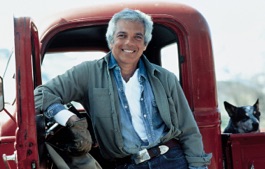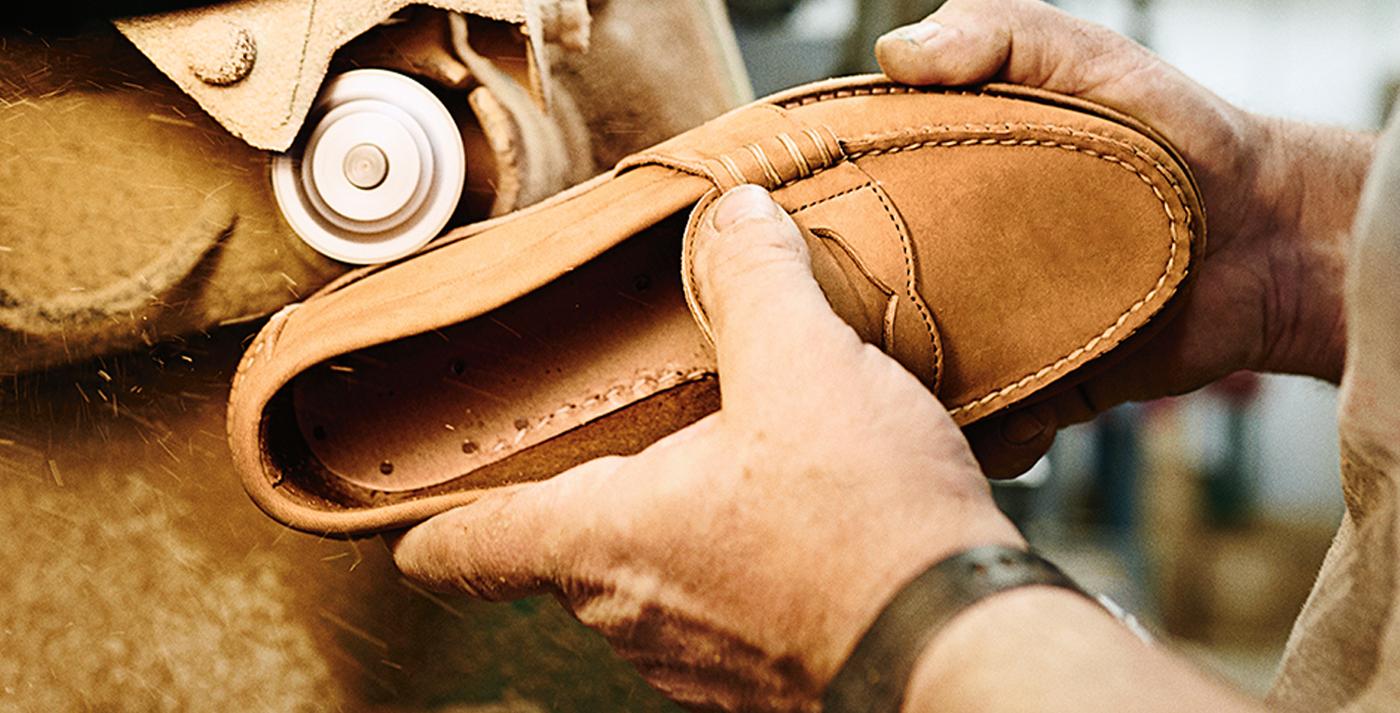
Style
Edric Penny Loafer from Polo Ralph Lauren
Made in Maine, Worn in NY
Tracing the craftsmanship behind the iconicEdric Penny Loafer from Polo Ralph Lauren
Originally based on the type of shoes favored by Norwegian farmers during the early 20th century, the penny loafer quickly evolved into a hallmark of Ivy League elegance when it was introduced to the United States during the 1930s. In the decades since, the Edric Penny Loafer from Polo Ralph Lauren has become an iconic example of the style, equally popular in the city and country, either dressed up with a suit or worn casually with sweats and a rumpled oxford shirt.
Made by the Rancourt family in Lewiston, Maine, which has been crafting footwear for the past three generations, the Edric embodies American craftsmanship as well as fashion. We asked Kyle Rancourt, a third-generation shoemaker with Rancourt & Co., to take us through the key elements of the Edric, and how a hand-selected hide is transformed into a meticulously finished pair of shoes.
Made by the Rancourt family in Lewiston, Maine, which has been crafting footwear for the past three generations, the Edric embodies American craftsmanship as well as fashion. We asked Kyle Rancourt, a third-generation shoemaker with Rancourt & Co., to take us through the key elements of the Edric, and how a hand-selected hide is transformed into a meticulously finished pair of shoes.
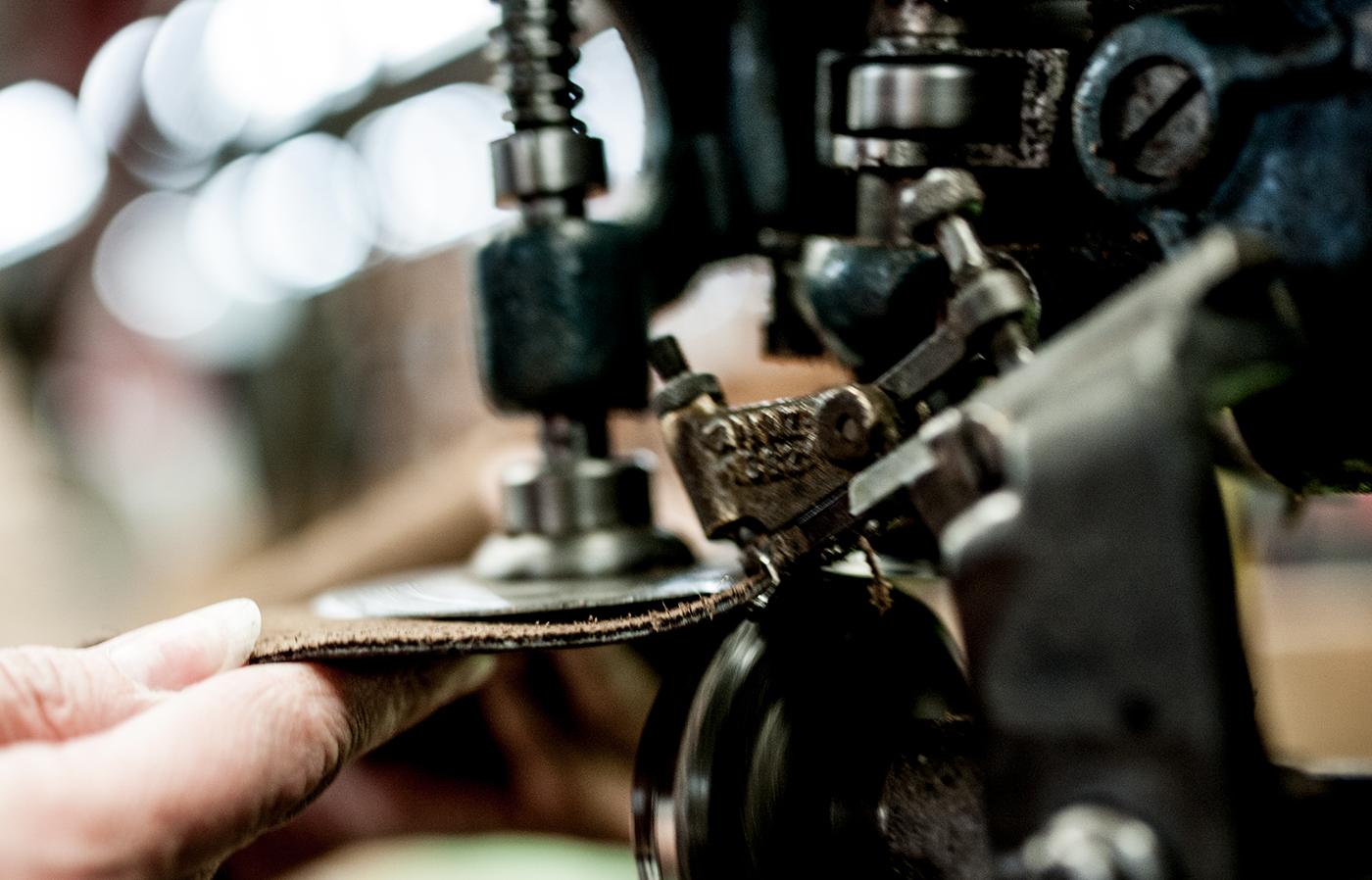
Horween leather is hand-cut by Rancourt & Co.’s artisans to ensure that only the best sections make it to the final product.
Bulldog Leather
Step one in the process is to hand-select a hide from the legendary Horween Leather Company, in Chicago. (The Edric is made from a type of burnished cowhide known as Bulldog.) The leather is hand-cut by Rancourt & Co.’s artisans to ensure that only the best sections—free from blemishes and not too stretchy—make it to the final product. Once the pieces are cut, a craftsman begins constructing the shoe. Rancourt & Co. leaves the upper unlined so “it’s more flexible and breathable,” Rancourt explains, making it better for sockless wear. The heel counter and the saddle are stitched on—then, as Rancourt says, “the leather starts to take its shape.”
Hand-Sewn Construction
“We call it genuine hand-sewn,” says Rancourt of the traditional full-moccasin construction used by Rancourt & Co. The leather of the upper is affixed to a last—a wooden form in the shape of a foot—and then wrapped around the underside. “We’re stitching the leather on the last and shaping it by hand,” he says. This technique allows the hand-sewer the leeway to fine-tune the fit, trimming and adjusting the leather until it is perfectly formed to the last. That means a better fit, greater durability and a more comfortable shoe that cradles your foot as you wear it.
The Full-Strap Saddle
A nod to the original penny loafers of the ’30s, the Edric features a full-strap saddle, which runs over the vamp of the shoe and all the way down to the sole on either side. It creates a sleeker, more refined look and provides extra support that helps the shoe keep its shape over time. A side note about that cutout in the center: The style may be called a penny loafer, but back in the ’60s, when the practice of slipping a coin into the slot was common, the coin in question was more likely to be a dime than a penny—handy, in those pre-cell-phone days, when you needed to make an emergency call.
Step one in the process is to hand-select a hide from the legendary Horween Leather Company, in Chicago. (The Edric is made from a type of burnished cowhide known as Bulldog.) The leather is hand-cut by Rancourt & Co.’s artisans to ensure that only the best sections—free from blemishes and not too stretchy—make it to the final product. Once the pieces are cut, a craftsman begins constructing the shoe. Rancourt & Co. leaves the upper unlined so “it’s more flexible and breathable,” Rancourt explains, making it better for sockless wear. The heel counter and the saddle are stitched on—then, as Rancourt says, “the leather starts to take its shape.”
Hand-Sewn Construction
“We call it genuine hand-sewn,” says Rancourt of the traditional full-moccasin construction used by Rancourt & Co. The leather of the upper is affixed to a last—a wooden form in the shape of a foot—and then wrapped around the underside. “We’re stitching the leather on the last and shaping it by hand,” he says. This technique allows the hand-sewer the leeway to fine-tune the fit, trimming and adjusting the leather until it is perfectly formed to the last. That means a better fit, greater durability and a more comfortable shoe that cradles your foot as you wear it.
The Full-Strap Saddle
A nod to the original penny loafers of the ’30s, the Edric features a full-strap saddle, which runs over the vamp of the shoe and all the way down to the sole on either side. It creates a sleeker, more refined look and provides extra support that helps the shoe keep its shape over time. A side note about that cutout in the center: The style may be called a penny loafer, but back in the ’60s, when the practice of slipping a coin into the slot was common, the coin in question was more likely to be a dime than a penny—handy, in those pre-cell-phone days, when you needed to make an emergency call.
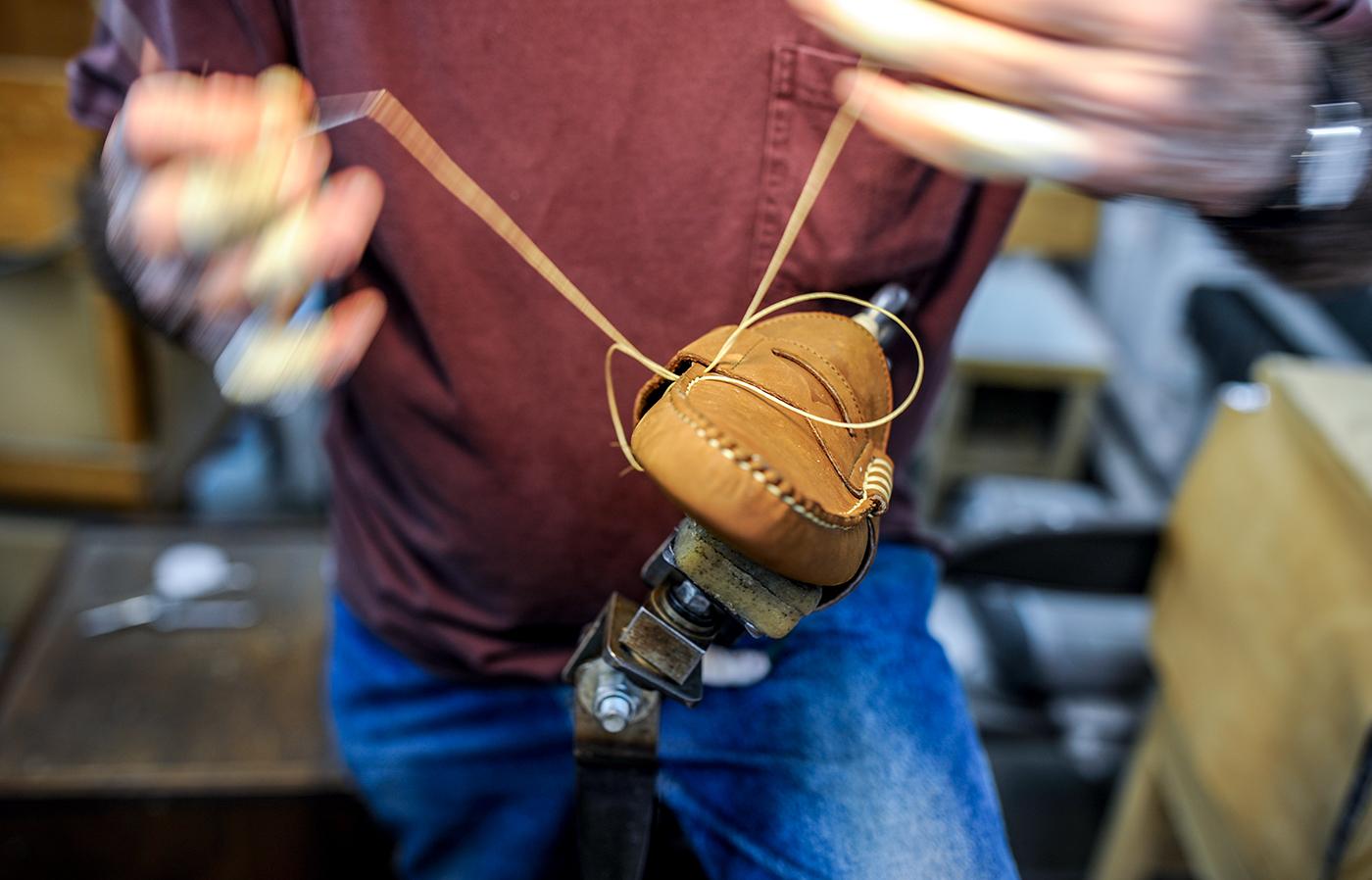
Hand-sewing the saddle to the shoe gives the loafer its distinctive beefroll shape.
The Beefroll
The beefroll is a distinctive feature of made-in-Maine penny loafers. It’s the mark of “a true hand-sewer’s penny loafer,” says Rancourt. “You can stitch the saddle to the shoe without a stitching machine,” using a method called overcast stitching, also known as whipstitching. Though the Edric’s saddle is also secured with machine stitching, the beefroll is Rancourt & Co.’s way of paying homage to the tradition that informs the style.
The beefroll is a distinctive feature of made-in-Maine penny loafers. It’s the mark of “a true hand-sewer’s penny loafer,” says Rancourt. “You can stitch the saddle to the shoe without a stitching machine,” using a method called overcast stitching, also known as whipstitching. Though the Edric’s saddle is also secured with machine stitching, the beefroll is Rancourt & Co.’s way of paying homage to the tradition that informs the style.
The Patina
While still on the last, the shoe is hand-burnished by Rancourt artisans to give it a lived-in character. What’s more, the Bulldog leather is “snuffed,” a process of opening up the grain, allowing it to accept the polishing waxes more easily, which, per Rancourt, “creates a patina with really rich high and low tones on the leather.” But that’s just the start. As you wear your loafers, that patina will develop even further, eventually becoming entirely unique to you.
While still on the last, the shoe is hand-burnished by Rancourt artisans to give it a lived-in character. What’s more, the Bulldog leather is “snuffed,” a process of opening up the grain, allowing it to accept the polishing waxes more easily, which, per Rancourt, “creates a patina with really rich high and low tones on the leather.” But that’s just the start. As you wear your loafers, that patina will develop even further, eventually becoming entirely unique to you.
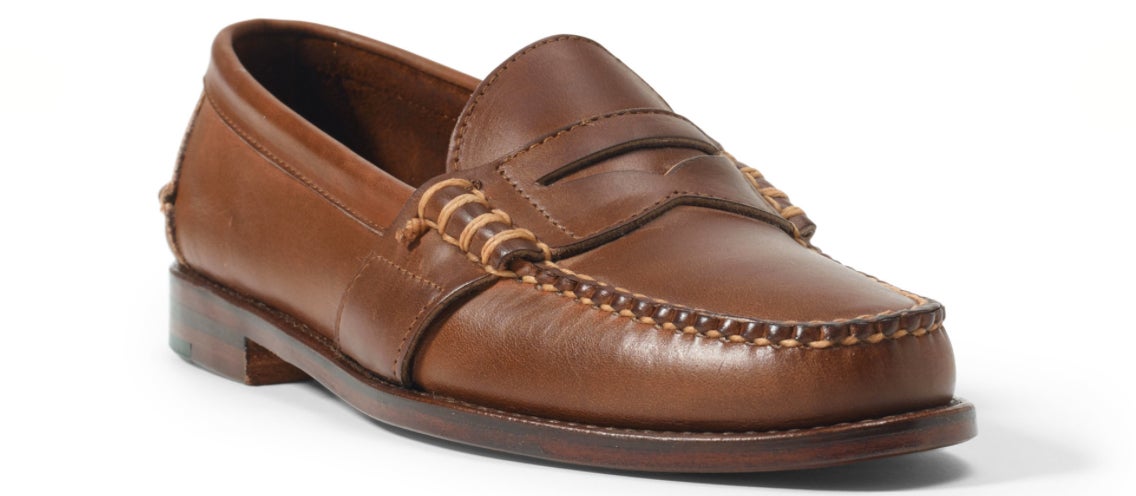
The Sole
The final piece of the Edric is a traditional leather sole, made using “littleway construction,” Rancourt explains, “which means the midsole and outsole are stitched directly to the upper. It’s very flexible because there’s no stiff welt.” It also allows the shoes to be resoled, extending their wearability indefinitely. “If you take care of a good pair of shoes,” he adds, “they can last you the rest of your life. They can be an heirloom item.”
The final piece of the Edric is a traditional leather sole, made using “littleway construction,” Rancourt explains, “which means the midsole and outsole are stitched directly to the upper. It’s very flexible because there’s no stiff welt.” It also allows the shoes to be resoled, extending their wearability indefinitely. “If you take care of a good pair of shoes,” he adds, “they can last you the rest of your life. They can be an heirloom item.”
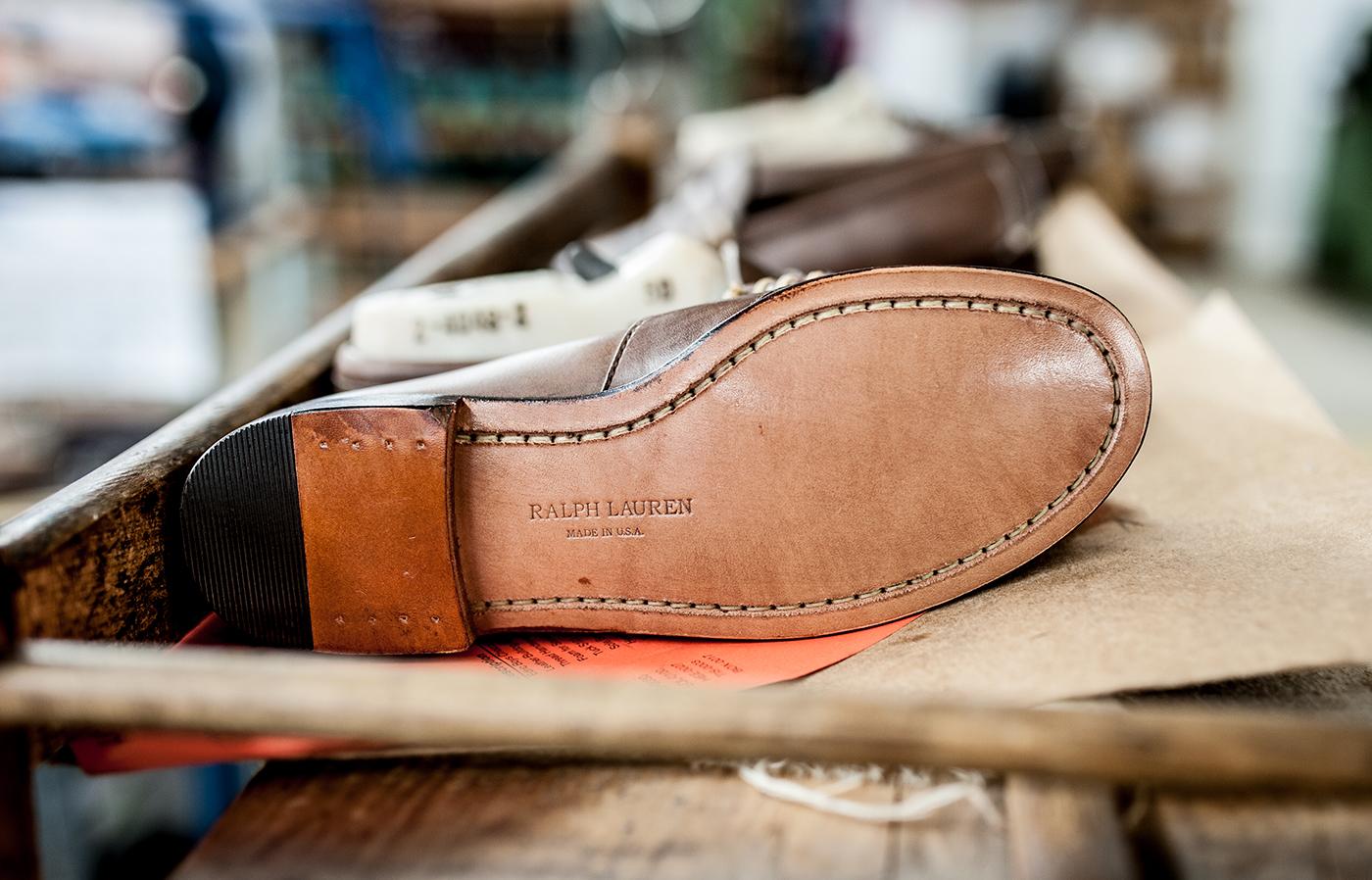
The final piece of the Edric: a traditional leather sole, stitched directly to the upper so it can be resoled endlessly.
is a writer and editor whose work has appeared in GQ, Esquire, Complex and more. He lives in Brooklyn with his wife.
- Sean Alonzo Harris
- ALL PHOTOGRAPHS COURTESY OF RALPH LAUREN CORPORATION







